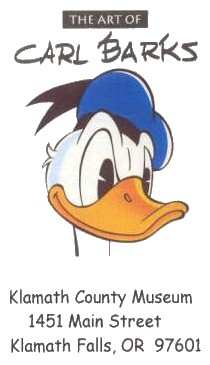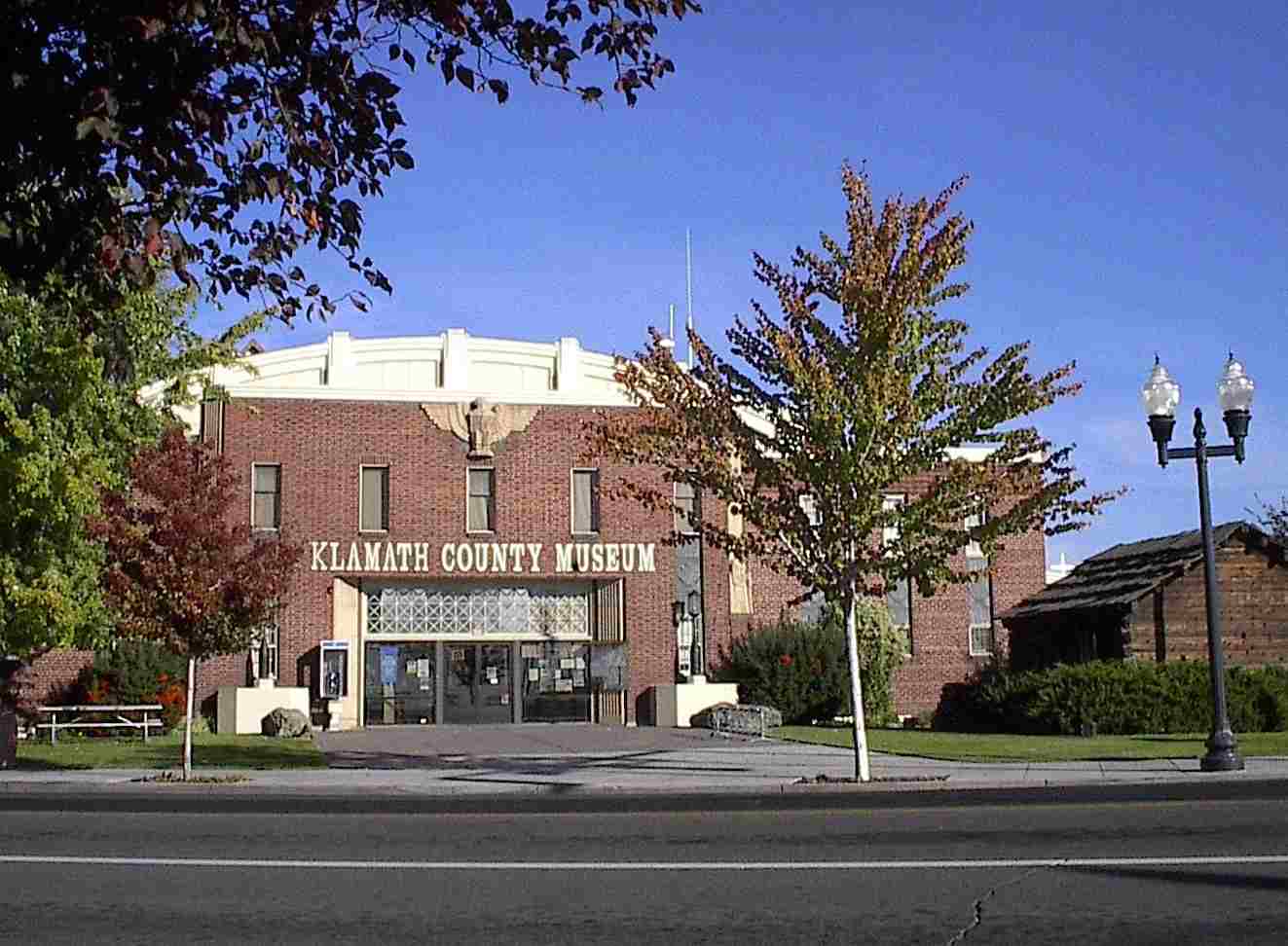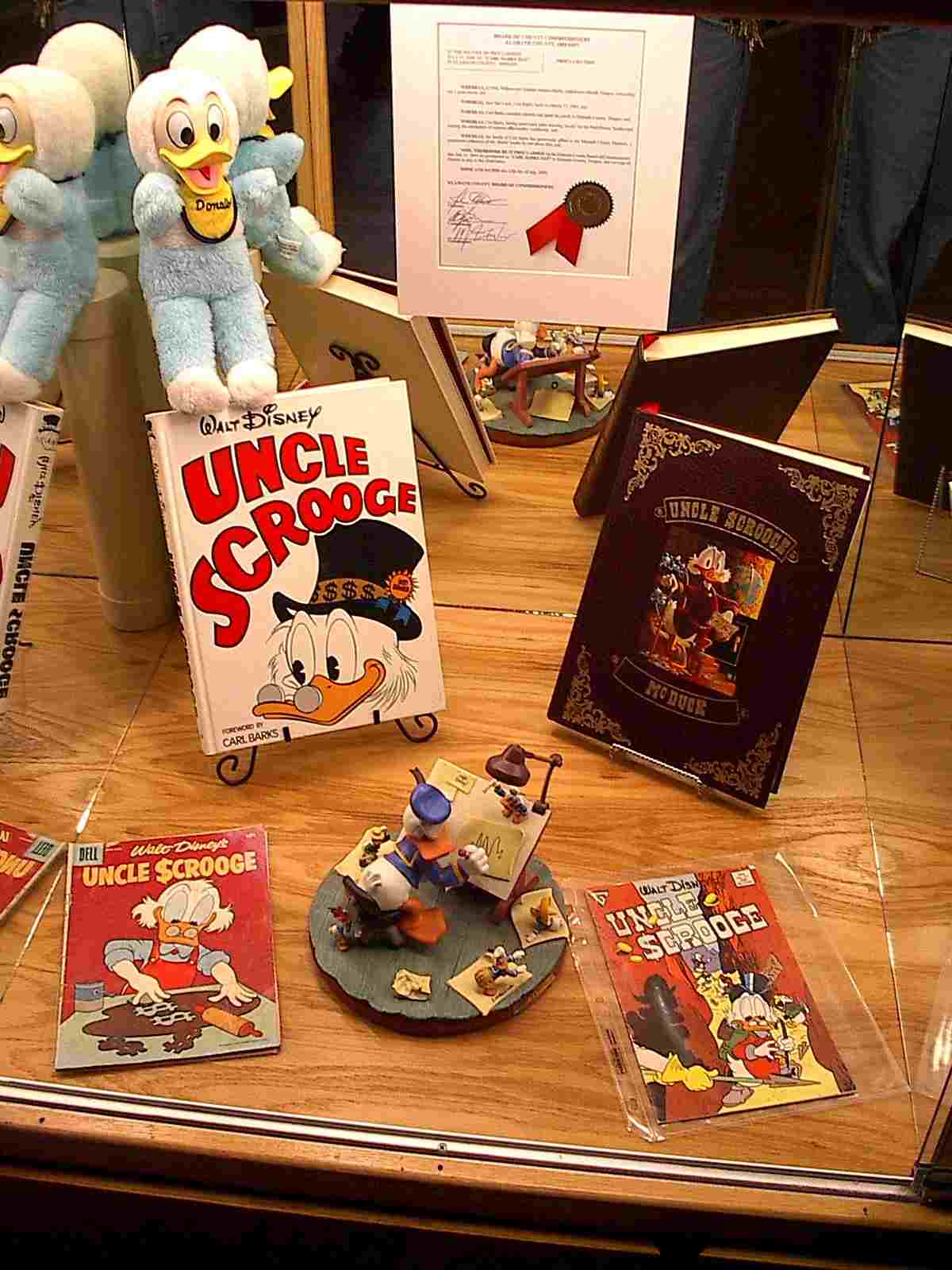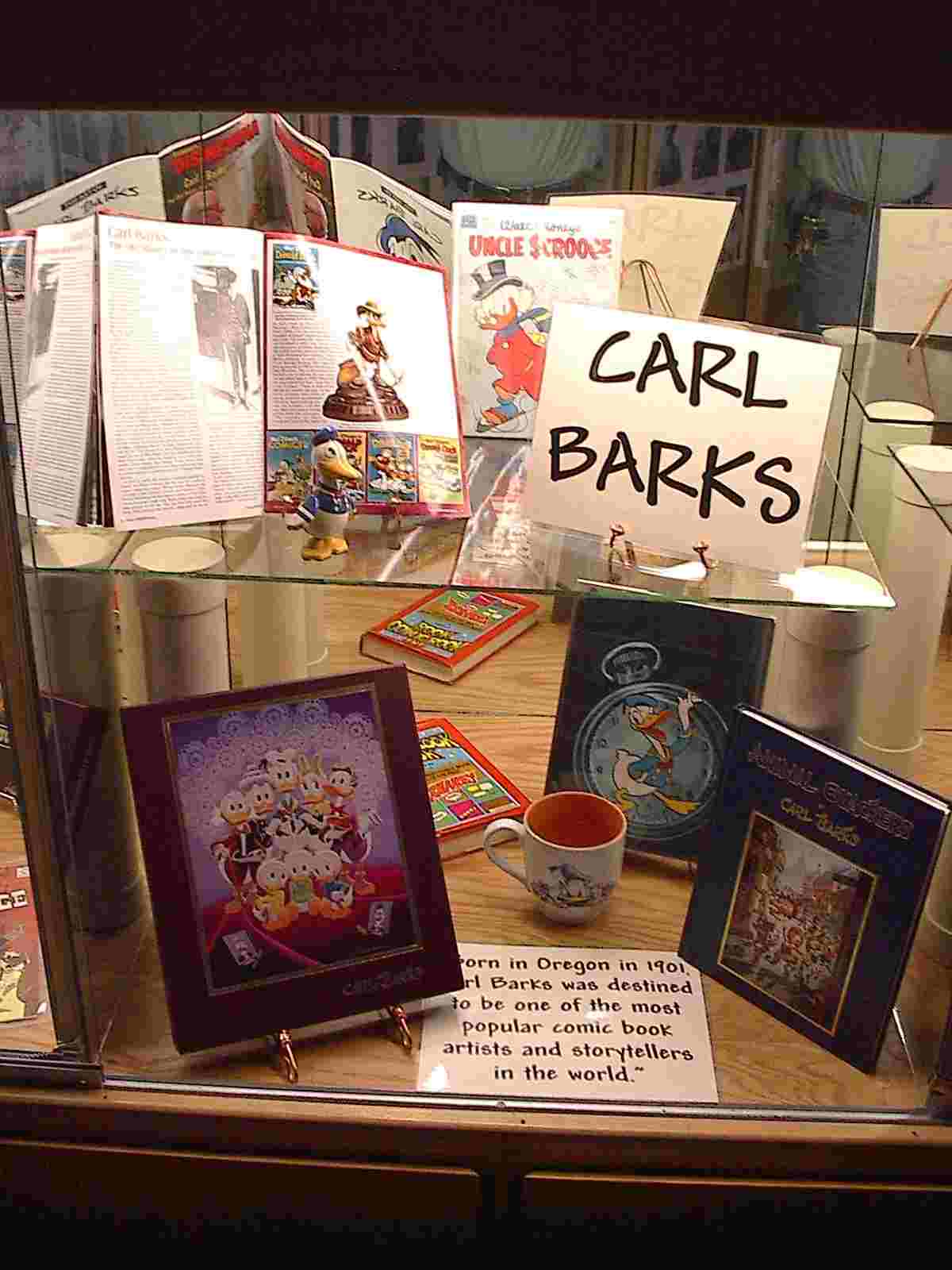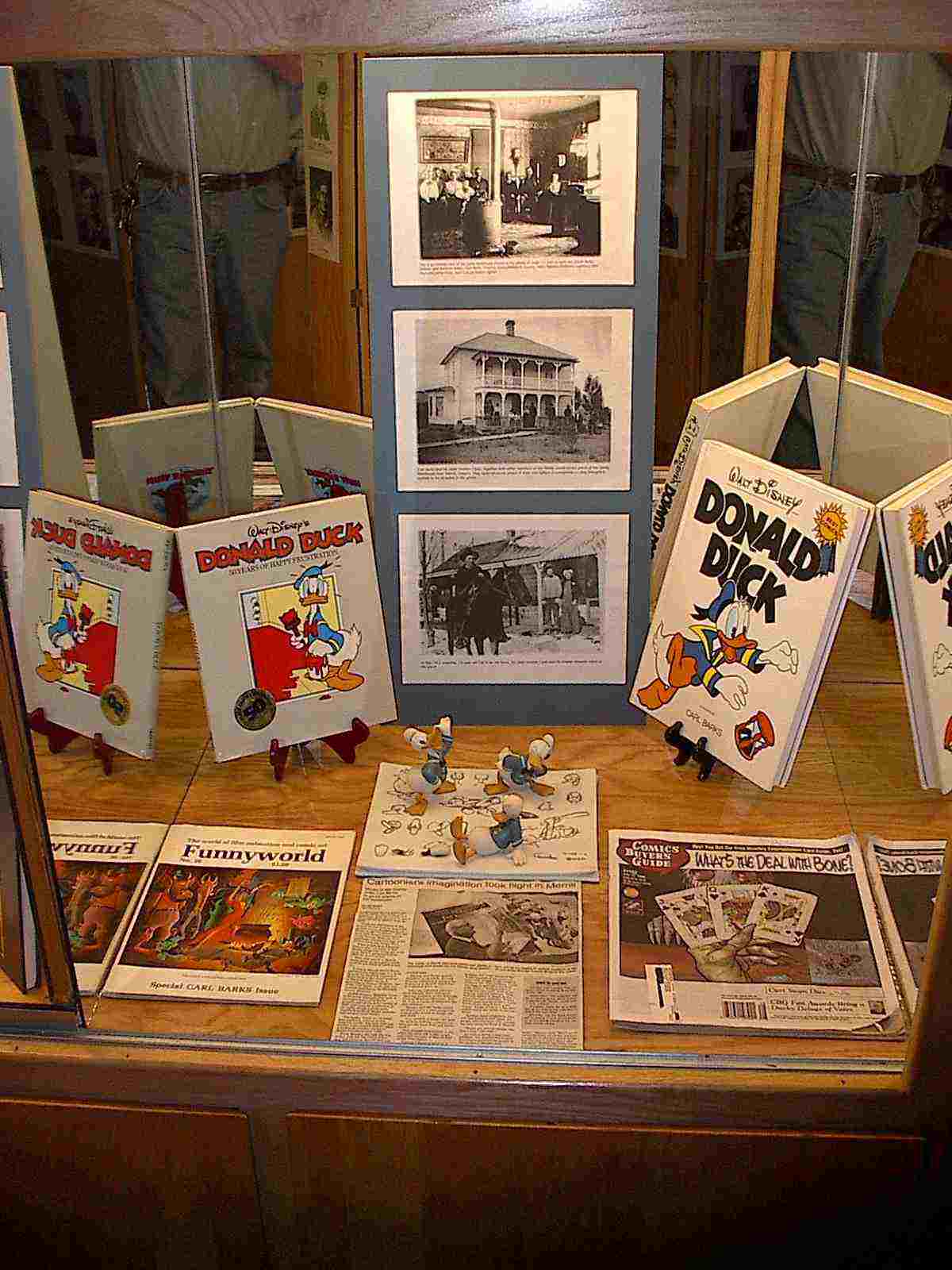Gerry Tank, Barks' Friend:
It has been almost 18 months since Peter Kylling
referred one of the granddaughters of Carl Barks
to me for assistance. Teresa McAlhany and her
mother, Dorothy, decided that it would be
appropriate to honor Carl by donating those
materials that were given to them by Carl to
some institution in or near Merrill, Oregon where
Carl was born, raised and educated in a one room
school.
I took on the task of contacting the
library in Klamath Falls, Oregon, a modest sized
community close to Merrill and made an offer to
have the materials placed in their institution if
they were properly displayed and available for
any Barks researchers. It was, however, suggested
that a better permanent display could be created
by donating their items to the Klamath County
Museum. Judith Hassen, the curator of the museum
was directed to Peter’s website to acquaint
her with the author.
Judith Hassen is a young, pleasant
and attractive lady who maintains this museum and
indicated an interest in receiving the materials.
She needed, however, the approval of the board of
directors before she could proceed. Slowly the project
progressed and a date was set for the opening.
There was to be a week of festivities with a
traveling display sent to Merrill especially for
the inhabitants of Carl’s birthplace.
On July 31st, 2004 with a friend I
traveled over a mountain pass, past Klamath Lake
with its pelicans, loon and other waterfowl to
the Klamath Falls museum where the permanent
display was to have its formal dedication.
Appropriately, July 31st was designated as
“CARL BARKS DAY’.
As you entered the building, past
the lobby you entered a decorated hallway at the
end of which was a well lighted blond piece
of furniture housing the memorabilia which Teresa
and her mother had donated. The display was
further enhanced by the mirrors which reflected
from the back wall of the showcase. If you were
visiting the museum to view any of its other
displays you could not pass without hopefully
paying homage to one of America’s great
authors, often likened to Europe’s Hans
Christian Andersen.
I considered my trip through the
mountains to the museum as a pleasurable event.
The personnel, the display, the refreshments and
the respect that was being shown to “the
good artist” as is emblazoned on his grave
marker in Grants Pass, Oregon was a fitting
tribute to a man I could call my friend.
Two other side stories. Among the
visitors on this day was an elderly lady who knew
Carl when she was a little girl. The other story
relates to the time in the final days of
Carl’s life when he made of point of wanting
the little one room school house he had attended
(Lone Pine) to be remembered for what education
it had given him. I tried several years ago to
get some information from a Klamath Falls
newspaper but they never responded. Before going
to Klamath Falls I had asked Judith Hassen if she
could dig up any information and she did. I had
never heard of this but the school was built on
skids so that it could be moved from place to
place in the area so that it could be close
to the greatest number of children.
|


